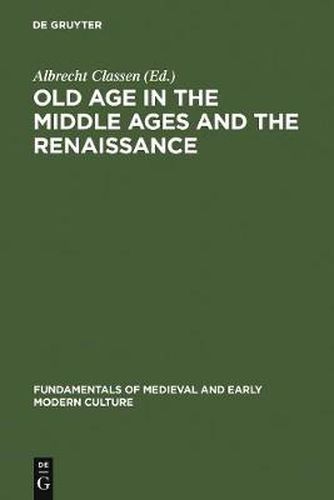Readings Newsletter
Become a Readings Member to make your shopping experience even easier.
Sign in or sign up for free!
You’re not far away from qualifying for FREE standard shipping within Australia
You’ve qualified for FREE standard shipping within Australia
The cart is loading…






After an extensive introduction that takes stock of the relevant research literature on Old Age in the Middle Ages and the early modern age, the contributors discuss the phenomenon of old age in many different fields of late antique, medieval, and early modern literature, history, and art history. Both Beowulf and the Hildebrandslied, both Wolfram von Eschenbach’s Parzival and Titurel, both the figure of Merlin and the trans-European tradition of Perceval/Peredur/Parzival, then the figure of the vetula in a variety of medieval French, English, and Spanish texts, and of the Old Man in The Stricker’s Daniel, both the treatment of old age in Langland’s Piers the Plowman and in Jean Gerson’s sermons are dealt with. Other aspects involve late-antique epistolary literature, early modern French farce in light of Disability Studies, the social role of old, impotent men in sixteenth- and seventeenth-century Netherlandish paintings, and the scientific discourse of old age and health since the 1500s. The discourse of Old Age proves to have been of central importance throughout the ages, so the critical examination of the issues involved sheds intriguing light on the cultural history from late antiquity to the seventeenth century.
$9.00 standard shipping within Australia
FREE standard shipping within Australia for orders over $100.00
Express & International shipping calculated at checkout
After an extensive introduction that takes stock of the relevant research literature on Old Age in the Middle Ages and the early modern age, the contributors discuss the phenomenon of old age in many different fields of late antique, medieval, and early modern literature, history, and art history. Both Beowulf and the Hildebrandslied, both Wolfram von Eschenbach’s Parzival and Titurel, both the figure of Merlin and the trans-European tradition of Perceval/Peredur/Parzival, then the figure of the vetula in a variety of medieval French, English, and Spanish texts, and of the Old Man in The Stricker’s Daniel, both the treatment of old age in Langland’s Piers the Plowman and in Jean Gerson’s sermons are dealt with. Other aspects involve late-antique epistolary literature, early modern French farce in light of Disability Studies, the social role of old, impotent men in sixteenth- and seventeenth-century Netherlandish paintings, and the scientific discourse of old age and health since the 1500s. The discourse of Old Age proves to have been of central importance throughout the ages, so the critical examination of the issues involved sheds intriguing light on the cultural history from late antiquity to the seventeenth century.